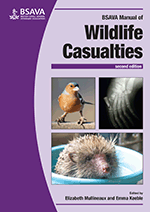
Full text loading...

The aim of this chapter is to set out the criteria by which rehabilitated wild animals may be assessed prior to release and to discuss some methods for release and post-release monitoring so that questions regarding the effectiveness of the rehabilitation and release process can be addressed. Reviewing these processes is an essential component of wildlife veterinary medicine and rehabilitation. Only through such assessment can important questions regarding animal welfare and the costs and/or benefits of the rehabilitation process can be truly assessed.
Rehabilitation and release, Page 1 of 1
< Previous page | Next page > /docserver/preview/fulltext/10.22233/9781910443316/9781910443316.9-1.gif

Full text loading...









